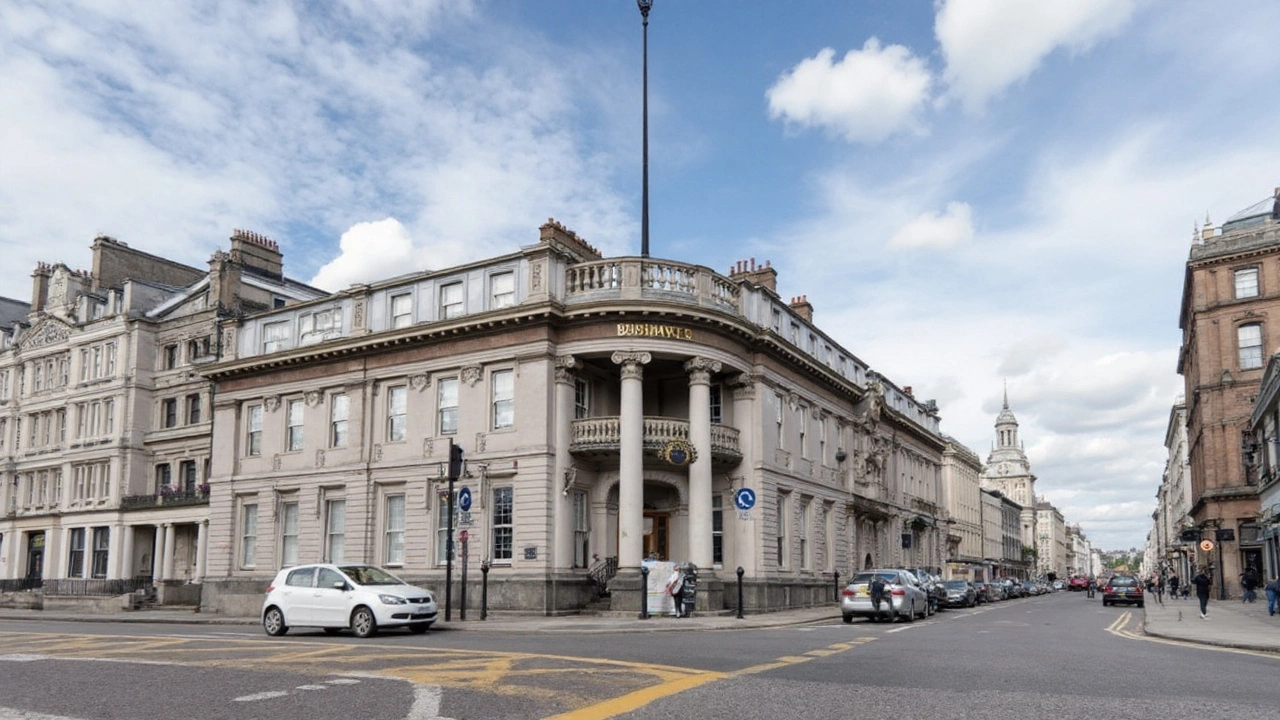Pubs warn a £1.7bn tax raid will push more venues to the brink
Britain’s biggest pub operators say they are staring at another blow. The government’s plan to raise £1.7 billion from a shake-up of business rates has set off a fierce backlash from the bar to the boardroom, with industry leaders warning it will mean more closures, fewer jobs, and another hit to already stretched communities.
What’s on the table? Bigger premises would pay more, smaller sites would pay less. On paper that sounds like help for independent shops on the high street. In practice, many pubs are larger footprint sites, so they would take a heavier hit just as energy costs, wages, and supplier prices have climbed. JD Wetherspoon founder Sir Tim Martin calls the approach “ridiculously disproportionate,” arguing it piles pressure on a sector already paying more tax than rivals in day-to-day trading.
Martin’s core gripe is the long-running VAT gap. Supermarkets pay zero VAT on most food sold in-store, while pubs and restaurants pay the full standard rate on their food sales. That difference lets grocery chains keep overall baskets cheaper and, in effect, subsidize alcohol promotions. Pubs cannot match that. It’s one reason beer bought to drink at home has become a cheaper habit than a night at the local.
The numbers back up the shift in behavior. Morgan Stanley research shows beer sales by volume in pubs more than halved between 2000 and 2023. Some of that is down to changing tastes and health trends, but cost remains the big driver: households battling rising bills opt for supermarket deals and home drinking. The worry for pub owners now is that higher rates will force yet more price hikes over the bar, pushing even more people away from venues that rely on footfall and atmosphere to survive.
Simon Emeny, chief executive at Fuller’s, says the sector already shoulders too much of the country’s property tax bill, pointing to the £25 billion in business rates collected each year. His argument: if the burden is uneven and skews toward venues that provide jobs, training, and community space, you end up with less of all three. Emeny wants the government to spread the tax more fairly across the economy so pubs are not the default cash machine for local revenues.
Rates are a dry topic with a real-world punch. They are calculated using a property’s “rateable value” multiplied by a national figure set by government, with reliefs layered on top. Bigger floorplans and prominent high-street locations tend to mean higher valuations, which is why pubs often rank among the hardest hit in town centers. Over the past two years, temporary reliefs helped many venues keep the lights on. Those are finite. If they wind down and larger sites face tougher bills, the shock hits just as debts from the pandemic and the energy spike linger.
Ministers want to encourage small business growth and tidy up a system many agree is outdated. Officials are likely to argue that shifting the burden toward larger premises is fairer and that the overall take must remain stable to fund local services. The sector’s reply is blunt: it’s not just how much you collect; it’s who you collect it from. Pubs, they say, create local jobs, bring life to high streets after dark, and act as social glue in towns and villages. Close one, and you don’t just lose a bar—you lose a meeting place, a reason to visit the town center, and a customer base for other nearby shops.

The deeper fault line: rates, VAT, and the pull of home drinking
At the heart of this fight is a tax mismatch the industry has complained about for years. Most supermarket food is zero-rated for VAT. Food in pubs and restaurants is taxed at 20%. During the pandemic, the UK briefly cut VAT for hospitality to help venues survive. When it returned to 20%, the gap reopened—and with inflation biting, the pain intensified. Beer duty reforms and a draught relief discount helped around the edges, but they never closed the price gap customers see on the shelf versus the pint price at the bar.
Chains and independents experience the pressure differently. Wetherspoon has scale, buying power, and a reputation for keen pricing. It can weather downturns better than a six-pub regional group or a single-site landlord. But even big operators say the sums no longer add up if rates rise and VAT stays put. For smaller pubs, a bad winter or one broken boiler can be existential, and an increase in fixed property costs can tip them over.
Closures are not a hypothetical risk; they are happening. Commercial property analysts have tracked hundreds of pubs disappearing from local rating lists in recent years—some converted to housing, others left vacant. Once a site is gone, reopening is hard. Staff move on, supply contracts lapse, and communities adjust to life without a local. That’s why industry groups keep asking for long-term certainty rather than short-term fixes that expire every spring Budget.
What would a “fairer” setup look like from the sector’s point of view? Operators and trade bodies talk about a few consistent ideas:
- Reduce or rebase VAT for hospitality food sales to narrow the gap with supermarkets.
- Lock in multi-year relief on rates for venues that invest, hire, and keep sites open year-round.
- Reform valuations so they reflect trading conditions and not just floorspace or location snapshots.
- Ring-fence support for community pubs in rural and coastal areas where closures cut deepest.
None of those ideas is cheap. The Treasury has to balance any giveaway with revenue elsewhere, which is why this argument keeps looping back to distribution: who pays and why. Pub bosses say the cost of losing venues is bigger than the tax they currently pay—the loss of apprenticeships, the drop in early-evening trade on the high street, and a rise in isolation for older or rural residents. Local authorities, meanwhile, need the money to fund services, and rates are one of the few tools they control.
There are some counterweights already in play. The revamped alcohol duty system taxes drinks by strength, and the draught relief gives pubs a modest break compared with supermarket cans and bottles. Energy prices have eased from their 2022 peak. Wage growth is steadying. But these tailwinds are small compared with the fixed costs that dominate pub P&Ls. If the tax base shifts further toward large premises, the reliefs risk being drowned out by higher baseline bills.
Smaller retailers may cheer parts of the plan, especially if they see their own bills fall. That’s the political challenge: any reform creates winners and losers. The pub sector is telling the government that making big venues pay more—simply because they are big—misses how hospitality economics work. A pub’s value to a community is not measured in square footage; it’s in footfall, jobs, and social impact that do not show up in a valuation grid.
For drinkers, the outcome is simple enough. If costs rise, prices follow. If prices rise, some customers stay home. And if too many stay home, landlords shut the doors. Industry leaders say they are not looking for special treatment; they want the playing field leveled so a pint in a pub does not carry an automatic tax penalty compared with a crate in a trolley.
All sides know the stakes. Pubs are deeply woven into British life, from city center boozers to village inns. The question now is whether a rates overhaul tries to protect that ecosystem or ends up accelerating a slow erosion that has been under way for two decades. The sector’s message to the Chancellor is clear: fix the imbalance, and do it for the long term, not just the next fiscal year.
